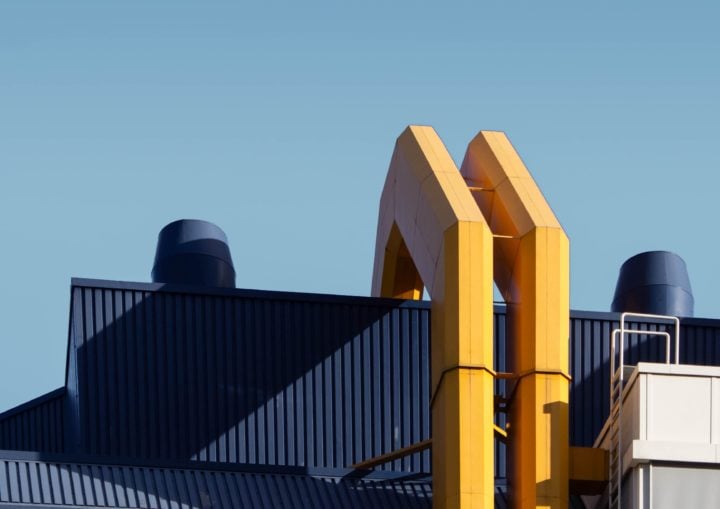[ad_1]
In 2021, the USA released over six million metric tons of carbon dioxide emissions — an increase of 6% on the previous year. With the global average temperature rising two degrees Fahrenheit since the pre-industrial era, greenhouse gas emissions must be urgently addressed to avoid catastrophic climate consequences. But what if these emissions could be removed from the atmosphere and converted into useful polymer-based products like paint, adhesives, detergents, and wastewater treatment chemicals?

Technology to convert CO2 into useful products already exists. We only need to learn to use it efficiently. Image credit: Victor via Unsplash, free license
Assistant Professor in the Mork Family Department of Chemical Engineering and Materials Science Shaama Mallikarjun Sharada will tackle this challenge in her latest project.
Sharada, awarded a 2023 Sloan Fellowship for her research, has turned her attention to a useful little enzyme known as RuBisCO, the powerhouse that fixes atmospheric CO2. Sharada and her collaborators aim to engineer the enzyme to convert captured C02 into glycerate and then acrylate — the basis for a myriad of polymer-based products.
The latest research — a collaboration with Ahmed Badran at Scripps Research Institute and Jimmy Jiang at the University of Cincinnati — has been awarded a $50,000 Scialog: Negative Emissions Science grant from the Research Corporation for Science Advancement, the Alfred P. Sloan Foundation and ClimateWorks Foundation.
An enzyme to transform emissions
RuBisCO, otherwise known as Ribulose-1,5-bisphosphate carboxylase-oxygenase, is one of the most abundant enzymes on the earth, converting CO2 into fuel for organisms like plants.
“Plants fix CO2 every day – the way they do that is largely through this enzyme called RuBisCO,” Sharada said. “CO2 is a linear molecule. It’s very stable, and it’s the highest oxidized form of carbon — you can’t oxidize it further. You can only reduce it by pushing electrons onto it.”
Sharada said that RuBisCO worked by doing precisely that — binding to a component of the enzyme known as RuBP and adding an electron to it to form carboxylic acid.
“Scaling up RuBisCO to the amount of carbon capture that we need is difficult because it is a slow reaction, and it is not very selective. So if the enzyme sees oxygen — which is more abundant than the atmosphere — instead of CO2, it will bind to oxygen instead.”
The challenge for Sharada and her collaborators will be to understand the reaction mechanism to tailor it to target CO2 rather than oxygen. Sharada said this would be the first step in creating a process to convert CO2 from the atmosphere at a large scale.
From greenhouse gas to polymer product
“The dream that we want to achieve is to not rely on fossil fuels, but to take CO2 from the atmosphere and convert it into a carbon feedstock to create the products you want,” Sharada said.
“I will do the computations to try to figure out the best tweak we can make to the enzyme. Then Ahmed Badran makes those enzymes to create glycerate, and Jimmy Jiang takes the glycerate and electrochemically converts it into acrylate — a monomer that can make polyacrylate, which is a widely used product,” Sharada said.
This is the second time Sharada has received a Scialog grant for her negative emissions research, having also won in 2020. Sharada said that a benefit of Scialog was that it encouraged multidisciplinary collaborations between researchers who may not otherwise cross paths.
She and her colleagues will use the one-year project grant to create a proof of concept and pursue further federal funding options. Sharada hopes this will enable the team to impact future CO2 reduction technology in a significant way.
“Global acceptance of climate change and strong efforts to reduce greenhouse gas emissions may not be enough to prevent further warming of the planet,” said Research Corporation for Science Advancement President and CEO Daniel Linzer.
“We’re going to need fundamental new science that leads to much more efficient technologies to remove CO2 from Earth’s atmosphere and oceans to help bring things back into balance.”
Source: USC
[ad_2]
Source link
